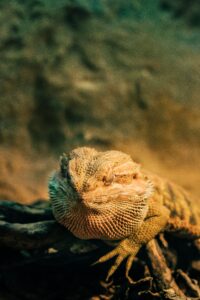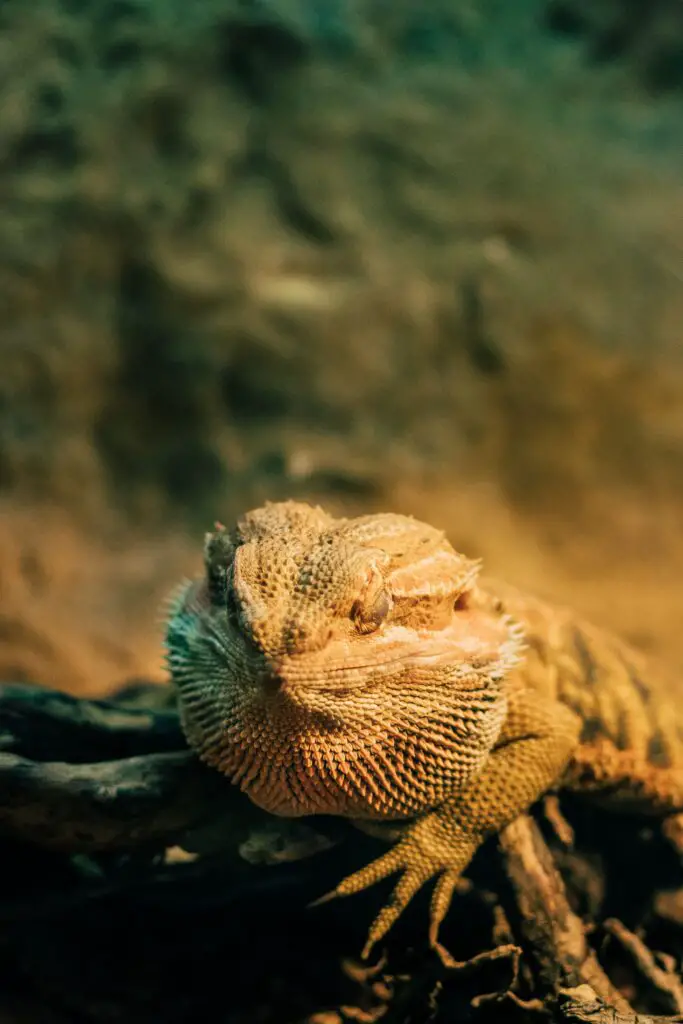Are Bearded Dragons Smart
Are bearded dragons smart: Bearded dragons, scientifically known as Pogona vitticeps, are captivating reptiles that have gained popularity as pets in recent years. With their unique appearance and docile nature, they make fascinating companions for reptile enthusiasts of all ages.
However, one question that often arises among pet owners is whether these scaly creatures possess intelligence. In this comprehensive article, we will delve into the topic of bearded dragon intelligence and explore their cognitive abilities, problem-solving skills, learning capacity, memory retention, social intelligence, and debunk common misconceptions.
Definition of Intelligence
Before we embark on exploring the intellectual capacities of bearded dragons, it is important to establish a clear definition of intelligence. Intelligence can be broadly defined as the capacity for acquiring and applying knowledge or skills effectively.
However, when it comes to animals like bearded dragons, gauging their intelligence becomes more nuanced since we need to consider their unique evolutionary traits and behaviors. Unlike mammals or birds that are often used as benchmarks for animal intelligence due to their advanced neural systems and social structures, reptiles operate on a different cognitive framework.
Bearded dragons possess a smaller brain size compared to mammals but exhibit remarkable adaptations to survive in harsh desert environments where they originate from. As such, when assessing their intelligence levels, we need to consider factors such as problem-solving abilities within their ecological niche rather than solely relying on conventional measures.
Overview of Bearded Dragons as Pets
 Bearded dragons have emerged as popular pets due to both their striking appearance and manageable care requirements. Native to Australia’s arid regions, they have adapted well to captivity if provided with an appropriate environment that mimics their natural habitat. These reptiles are known for their distinct physical characteristics: a spiky beard-like protrusion under their chin, a flattened body shape, and the ability to change color based on their mood or temperature.
Bearded dragons have emerged as popular pets due to both their striking appearance and manageable care requirements. Native to Australia’s arid regions, they have adapted well to captivity if provided with an appropriate environment that mimics their natural habitat. These reptiles are known for their distinct physical characteristics: a spiky beard-like protrusion under their chin, a flattened body shape, and the ability to change color based on their mood or temperature.
Bearded dragons are diurnal creatures, meaning they are most active during the day, which makes them an ideal choice for those who want to interact with their pets during waking hours. Furthermore, bearded dragons have a generally calm temperament and can tolerate handling well when properly acclimated.
They bond with their owners over time and can appreciate human presence. While they may not exhibit the same level of social cognition as mammals or birds, they still display an array of fascinating behaviors and responses that make them intriguing companions.
In order to provide optimal care for bearded dragons as pets, it is crucial to understand their specific needs in terms of housing, nutrition, temperature regulation, and enrichment. By creating a suitable environment that meets these requirements and promotes their overall well-being, we can ensure that these remarkable reptiles thrive under our care.
Bearded Dragon Intelligence: An Overview
Cognitive abilities
Bearded dragons, despite being cold-blooded reptiles, possess a considerable degree of cognitive abilities. These fascinating creatures exhibit problem-solving skills, learning capacity, and memory retention that showcase their intelligence within the reptilian world. While they may not match the cognitive capabilities of mammals or birds, bearded dragons display an impressive range of mental abilities.
Problem-solving skills
One remarkable aspect of bearded dragon intelligence is their proficiency in solving problems. Through observation and experimentation, researchers have found that these reptiles are capable of reasoning their way through various challenges.
For instance, in maze navigation experiments, bearded dragons have demonstrated the ability to remember different routes and effectively find solutions to reach their goal. This indicates their aptitude for spatial awareness and logical decision-making.
Learning capacity
Bearded dragons display a notable learning capacity that allows them to acquire new skills and adapt to changing environments. Research has shown that they are capable of associative learning through classical conditioning techniques.
By pairing specific stimuli with rewards or punishments, such as associating a particular color with food availability or discomfort, bearded dragons quickly learn to respond accordingly. This learning ability suggests a level of cognitive flexibility in these reptiles.
Memory retention
Memory retention is another aspect where bearded dragons exhibit intriguing capabilities. They possess both short-term and long-term memory abilities that aid them in various aspects of survival and adaptation in their natural habitats. In cognition experiments involving spatial memory tests or object recognition tasks conducted over extended periods, bearded dragons have consistently displayed effective recall.
The combination of problem-solving skills, learning capacity, and memory retention showcased by bearded dragons reveals an impressive level of intelligence within the reptilian realm. While further research is necessary to delve deeper into the intricacies of their cognitive abilities, it is clear that these creatures possess mental faculties that contribute to their overall adaptability and survival in their environments.
Social Intelligence of Bearded Dragons
Communication Skills
Bearded dragons may not have the same complex communication repertoire as mammals, but they do possess remarkable social intelligence. Their ability to communicate through visual signals and vocalizations allows them to convey messages to other members of their species effectively.
One common visual signal displayed by bearded dragons is head bobbing. This behavior serves multiple purposes, including asserting dominance, expressing territorial boundaries, or even signaling submission during encounters with other individuals.
Furthermore, arm waving is another fascinating visual signal observed in bearded dragons. It is often seen in males during courtship displays or territorial disputes with rivals.
Vocalizations
While not as extensive as the vocal repertoires of birds or mammals, bearded dragons do emit various sounds that serve communicative functions within their limited range. Hissing is a prominent vocalization displayed by these reptiles when they feel threatened or agitated. By hissing, they aim to intimidate potential predators and deter them from approaching further.
On the other hand, chirping can be heard when two male bearded dragons are engaged in a competitive interaction over mates or territory. This unique vocalization helps establish dominance and assert their presence.
Recognition of Owners and Bonding Behavior
 Contrary to popular belief that reptiles lack emotional connections with humans, research suggests that bearded dragons can indeed recognize their owners and form bonds with them. These reptiles possess an impressive ability to associate familiar faces and scents with positive experiences such as feeding or handling by their owners.
Contrary to popular belief that reptiles lack emotional connections with humans, research suggests that bearded dragons can indeed recognize their owners and form bonds with them. These reptiles possess an impressive ability to associate familiar faces and scents with positive experiences such as feeding or handling by their owners.
Over time, they display signs of recognition by exhibiting increased comfort levels around familiar individuals and even showing excitement when approached by them. Furthermore, bonding behavior can also be observed in bearded dragons through tactile interactions with their owners.
These reptiles may become accustomed to being gently stroked on specific body parts like their heads or underbellies. Developing trust and a positive bond with their owners not only enhances the overall welfare of bearded dragons but also demonstrates their social intelligence and capacity for forming meaningful connections.
Problem-Solving Skills in Bearded Dragons
Maze Navigation Experiments and Results
Bearded dragons, despite their reptilian nature, possess remarkable problem-solving skills. One way these abilities have been studied is through maze navigation experiments.
In these experiments, researchers design mazes with various pathways and obstacles to assess the bearded dragon’s ability to find the correct path towards a reward. The results have been quite intriguing.
Studies have shown that bearded dragons exhibit impressive navigational abilities when faced with mazes. By observing their behavior, researchers have noticed that these reptiles display a remarkable sense of spatial awareness and memory retention.
They can quickly adapt to new environments and learn from previous experiences, allowing them to navigate complex mazes with relative ease. Furthermore, bearded dragons demonstrate the ability to strategize and utilize problem-solving techniques during these maze trials.
They exhibit behaviors such as pausing at decision points, scanning the surroundings for visual cues or landmarks, and making purposeful movements towards their desired goal. Their agility and precision in overcoming obstacles within the maze further highlight their problem-solving prowess.

Object Manipulation and Tool Usage Observations
Are bearded dragons smart: In addition to their exceptional maze navigation skills, bearded dragons also exhibit intriguing object manipulation abilities. Researchers have conducted observations where they present these reptiles with objects that require manipulation or tool usage to obtain a reward. The results of such experiments shed light on the resourcefulness of these creatures.
Bearded dragons have demonstrated an innate understanding of cause-and-effect relationships when interacting with objects. They display dexterity in manipulating items by using their mouths or limbs effectively while solving puzzles or accessing hidden rewards within various contraptions.
These observations imply not only cognitive flexibility but also an understanding of tool functionality—a trait often associated with higher intellectual capabilities. Interestingly, some studies even suggest that certain individuals within this species show individual variations in problem-solving strategies.
While some bearded dragons may rely more on trial-and-error methods, others exhibit a more systematic and cautious approach. These differences in problem-solving styles provide further evidence of the complex cognitive abilities possessed by these reptiles.
Maze navigation experiments and object manipulation observations have revealed the impressive problem-solving skills of bearded dragons. Their ability to navigate complex mazes with spatial awareness, strategy, and memory retention showcases their capability for adaptive thinking.
Furthermore, their resourcefulness in manipulating objects and understanding cause-and-effect relationships highlights their cognitive flexibility. The combination of these skills emphasizes that bearded dragons possess a level of problem-solving intelligence that is often underestimated in reptiles.
Learning Capacity in Bearded Dragons
Are bearded dragons smart: Classical Conditioning Experiments and Findings
Bearded dragons have showcased remarkable learning capacity, as evidenced by classical conditioning experiments conducted on these reptiles. Classical conditioning involves associating a specific stimulus with a particular response to elicit learned behavior.
In one such experiment, researchers paired a specific sound with the presentation of food to bearded dragons. After repeated pairings of the sound and food, the dragons began to anticipate the reward when they heard the sound alone, showcasing successful classical conditioning.
These findings indicate that bearded dragons possess the ability to form associations between stimuli, demonstrating their aptitude for learning through classical conditioning methods. Such experiments validate their capacity for acquiring knowledge and adapting their behaviors based on environmental cues.
Observational Learning Abilities
Are bearded dragons smart: Observational learning refers to acquiring new behaviors or skills by simply observing others without any direct reinforcement or personal experience. This cognitive ability has been explored in various animal species, including bearded dragons. Through experiments where one bearded dragon observed another performing a certain task successfully, researchers have found that these reptiles can learn by watching and imitating others.
For example, in an observational learning experiment involving maze navigation, one bearded dragon was placed in a maze with a transparent partition separating it from another dragon that had already mastered navigating through the maze correctly. The observer dragon was then allowed access to navigate through the maze itself.
Remarkably, it displayed significantly improved performance compared to those without any pre-training observations. These findings suggest that not only do bearded dragons possess observational learning abilities but also excel at applying this acquired knowledge to enhance their own problem-solving skills and adaptability.
Overall, these studies highlight the impressive learning capacities of bearded dragons – from acquiring conditioned responses through classical conditioning techniques to utilizing observational learning abilities for problem-solving tasks. Their ability to learn from both direct experiences and by observing others emphasizes the cognitive complexity of these reptiles and underlines their intelligence in the realm of learning and adaptation.
Memory Retention in Bearded Dragons
Long-term memory experiments
Are bearded dragons smart: When it comes to memory retention, bearded dragons have demonstrated impressive capabilities. Long-term memory refers to the ability to retain information and recall it after a certain period of time has passed.
Several studies have been conducted to examine the long-term memory of these fascinating reptiles. In one experiment, bearded dragons were trained to associate a specific color cue with receiving a food reward.
The researchers then tested the lizards’ ability to remember this association even after several days had passed. Astonishingly, the bearded dragons showed consistent recall of the color cue and eagerly approached for their reward, indicating a robust long-term memory capacity.
Another study aimed to investigate whether bearded dragons could remember spatial locations. The lizards were introduced to an environment with multiple hiding spots and rewarded when they successfully found a hidden prey item in a specific location.
Even after an extended period of time, bearded dragons were able to accurately remember the precise location where the reward was previously hidden. These findings suggest that these reptiles possess remarkable long-term spatial memory abilities.
Spatial memory tests
 Spatial memory is crucial for animals when navigating their environment and finding resources. Bearded dragons have shown remarkable spatial memory skills through various tests designed specifically for this purpose.
Spatial memory is crucial for animals when navigating their environment and finding resources. Bearded dragons have shown remarkable spatial memory skills through various tests designed specifically for this purpose.
One study employed a radial arm maze, which consisted of several arms radiating from a central hub. Each arm contained either food or no food as rewards or dead-ends respectively.
Bearded dragons were allowed free exploration within this maze until they learned the correct path leading to food rewards while avoiding dead-ends. As the experiment progressed, it became evident that these reptiles gradually improved their performance by remembering which arms contained rewards and which ones did not.
Furthermore, researchers conducted spatial discrimination tests by placing two similar-looking objects in different locations within an enclosure. Bearded dragons consistently approached the object that was initially placed in a specific location, indicating their ability to remember and recognize spatial information.
These experiments highlight the impressive spatial memory capabilities of bearded dragons, enabling them to navigate complex environments and locate resources efficiently. Their ability to retain information over extended periods suggests a level of cognitive sophistication that surpasses common perceptions about reptilian intelligence.
Factors Influencing Bearded Dragon Intelligence
Environmental Enrichment
Are bearded dragons smart: Bearded dragons thrive in environments that provide mental stimulation and opportunities for exploration. An enriched environment encompasses various elements that promote cognitive development and intellectual growth in these reptiles. One crucial factor is the provision of a spacious enclosure with diverse hiding spots, branches, rocks, and other climbing structures that mimic their natural habitat.
This setup encourages physical activity, problem-solving, and spatial awareness. Furthermore, introducing novel objects or toys into their enclosure helps stimulate their curiosity and provides mental challenges.
For instance, hiding treats within interactive puzzle toys can engage their problem-solving skills as they navigate through different mechanisms to access the reward. Additionally, offering different textures to explore such as sand, rocks, or branches can enhance their sensory experiences and cognitive abilities.
Temperature regulation also plays a significant role in bearded dragon intelligence. These reptiles are ectothermic creatures that rely on external heat sources to regulate their body temperature effectively.
Maintaining an optimal temperature gradient within the enclosure is vital as it allows them to thermoregulate efficiently. Studies have shown that providing appropriate thermal gradients positively impacts brain function and cognitive performance in reptiles.
Social Interaction
Are bearded dragons smart: Contrary to popular belief that reptiles are solitary creatures with minimal social interaction needs, bearded dragons exhibit surprising social behaviors. These intelligent reptiles respond positively to regular human interaction when properly socialized from a young age.
Spending quality time with your bearded dragon by hand-feeding them or engaging in gentle handling can foster a strong bond between you both. Beyond human interaction, introducing conspecifics (other bearded dragons) into their environment can also benefit their intelligence development and overall well-being.
Controlled social interactions between bearded dragons allow for complex behavioral patterns such as territoriality and mating displays to emerge naturally. It is crucial to ensure proper introduction protocols are followed to minimize stress and aggression.
Moreover, placing their enclosures in areas of the home where they can observe the daily activities of the household can provide mental stimulation through environmental enrichment. The sights, sounds, and smells of a bustling household can contribute to their cognitive development by exposing them to different stimuli and promoting socialization with their human companions.
Environmental enrichment and social interaction play significant roles in shaping the intelligence of bearded dragons. Providing a stimulating environment that mimics their natural habitat with various hiding spots, climbing structures, and interactive toys promotes cognitive growth.
Additionally, regular social interactions with humans and conspecifics contribute to their overall well-being and intellectual development. By understanding these factors, we can create optimal conditions for our bearded dragons to thrive intellectually while enjoying fulfilling lives as our beloved pets.
The Role of Genetics in Bearded Dragon Intelligence
Breeding practices and selection for intelligence traits
Are bearded dragons smart: When discussing the role of genetics in bearded dragon intelligence, it is important to note that while there is evidence suggesting a genetic component to cognitive abilities, the research in this area is still limited. Bearded dragons, like other animals, inherit certain traits from their parents through genetics.
However, the specific genes responsible for intelligence in these reptiles have not been fully identified or understood. Breeding practices can play a significant role in shaping the intelligence of bearded dragons over generations.
While there may not be explicit breeding programs targeting cognitive abilities, breeders often select individuals with desirable qualities such as size, coloration, and temperament. It is possible that unintentional selection for certain behavioral traits indirectly influences intelligence.
Some breeders may prioritize selecting bearded dragons with active and curious personalities as they perceive them to be more intelligent. This preference could indirectly promote the inheritance of certain genetic factors associated with heightened cognitive abilities.
However, it should be noted that these assessments are subjective and not necessarily based on scientific evidence. Furthermore, there has been limited scientific research investigating specific genetic markers related to intelligence in bearded dragons.
Identifying such markers would require extensive studies involving genome sequencing and analysis to understand how specific genes influence cognitive development. Until such studies are conducted, our understanding of the genetics underlying intelligence in these reptiles will remain incomplete.
While breeding practices may inadvertently influence cognitive abilities through indirect selection for desirable behavioral traits, our knowledge of the genetic factors contributing to bearded dragon intelligence remains limited. Further research is needed to better understand how genes interact with environmental factors and contribute to their cognitive capabilities.
Common Misconceptions about Bearded Dragon Intelligence
Size does not determine intelligence
Despite the common misconception, the size of a bearded dragon does not directly correlate with its intelligence. Many people assume that larger bearded dragons possess greater cognitive abilities simply because they are bigger in size. However, intelligence is not solely determined by physical attributes but rather by various cognitive factors such as problem-solving skills, learning capacity, and memory retention.
It is important to recognize that bearded dragons of different sizes can exhibit similar levels of intelligence based on these cognitive abilities. Studies have shown that even juvenile bearded dragons, which are smaller in size, can display impressive problem-solving skills and exhibit a high level of learning capacity.
This further supports the notion that intelligence is not dependent on size alone but rather on the inherent cognitive abilities possessed by each individual bearded dragon. Therefore, it is crucial to evaluate these cognitive factors rather than making assumptions based solely on physical appearance.
Differences between individual bearded dragons
Are bearded dragons smart: Another common misconception about bearded dragon intelligence is assuming that all individuals within this species possess identical levels of cognitive capabilities. However, just like humans or any other animal species, there are significant variations in intelligence levels among individual bearded dragons. Factors such as genetics and environmental influences play a significant role in shaping an individual’s intellectual capacity.
It has been observed that some bearded dragons naturally exhibit higher problem-solving skills or learning capacity compared to others within the same group or population. Similarly, their ability to retain information may vary from one individual to another.
It is essential to understand and appreciate these differences when assessing the intelligence of a specific bearded dragon or comparing them to others. Each reptile has its own unique set of strengths and weaknesses when it comes to intellectual capabilities.
Dismissing misconceptions about bearded dragon intelligence is crucial for understanding their true cognitive abilities. Size does not directly determine intelligence, as it is based on various cognitive factors such as problem-solving skills, learning capacity, and memory retention.
Furthermore, it is important to acknowledge the variations in intelligence levels between individual bearded dragons due to genetic and environmental factors. By dispelling these misconceptions, we can gain a better understanding of the fascinating intellectual capabilities that these reptiles possess.
Fun Facts about Bearded Dragon Intelligence
Are bearded dragons smart: Bearded dragon’s ability to count prey items accurately
One fascinating aspect of bearded dragon intelligence is their remarkable ability to count prey items accurately. These reptiles have been observed exhibiting a level of numerical cognition that is quite impressive.
In experiments conducted by researchers, bearded dragons were presented with a varying number of crickets, and it was found that they were able to accurately determine the quantity. This indicates that these reptiles possess some degree of numerical discrimination, which is not commonly observed in other reptile species.
The bearded dragon’s ability to count prey items accurately showcases their cognitive prowess and highlights their remarkable adaptability in the wild. Furthermore, this counting behavior in bearded dragons has also been linked to their feeding strategies.
In the wild, bearded dragons primarily feed on insects such as crickets and mealworms. They need to optimize their hunting efforts to ensure sufficient food intake while conserving energy.
By being able to assess the number of prey items available, they can better plan their hunting strategy and make informed decisions about when and where to strike. This demonstrates a sophisticated level of cognitive processing and strategic thinking that adds another layer of intrigue to the intelligence of these reptiles.
Their ability to recognize their own reflection
Are bearded dragons smart: Another captivating aspect of bearded dragon intelligence is their capacity for self-recognition through recognizing their own reflection. While self-recognition has long been considered a trait exclusive to higher mammals like primates and dolphins, recent studies have shown evidence suggesting that some reptiles possess this ability as well – including our scaly friends, the bearded dragons.
In controlled experiments using mirrors, it was observed that when faced with their own reflections, bearded dragons exhibited behaviors indicative of self-awareness. They displayed signs such as increased head-bobbing patterns or examining themselves more closely.
This suggests that they possess a sense of self-identity and are capable of recognizing themselves as distinct individuals. This ability to recognize their own reflection is not only remarkable in the context of reptiles but also highlights the complex cognitive abilities possessed by these intriguing creatures.
The significance of self-recognition in bearded dragons goes beyond mere curiosity. It has implications for their social interactions and territorial behavior.
By recognizing themselves, they can distinguish between themselves and potential rivals or predators, allowing them to assert dominance or avoid unnecessary conflicts. This adaptive behavior further highlights the intelligence of bearded dragons and their ability to navigate their surroundings with a level of cognitive sophistication rarely associated with reptiles.
The fun facts about bearded dragon intelligence shed light on just how remarkable these creatures are. Their ability to count prey items accurately demonstrates numerical cognition that is not commonly observed in reptiles.
Additionally, their capacity for self-recognition through recognizing their own reflection adds a fascinating dimension to their intelligence repertoire. Bearded dragons continue to captivate researchers and pet owners alike with their cognitive abilities, reminding us that intelligence can come in unexpected forms within the animal kingdom.
To sum up are bearded dragons smart
Summary of bearded dragon intelligence capabilities
Bearded dragons, despite being reptiles, possess a surprising amount of cognitive abilities that often go unnoticed by their human companions. Through various studies and observations, it is evident that these creatures exhibit problem-solving skills, learning capacity, and memory retention.
Their cognitive abilities extend to social intelligence as well, where they demonstrate communication skills and recognition of owners. Moreover, bearded dragons showcase remarkable problem-solving skills through maze navigation experiments and object manipulation.
They also display a capacity for learning through classical conditioning and observational learning. Furthermore, their memory retention is remarkable in both short-term and long-term scenarios.
Appreciation for the unique cognitive abilities of these reptiles
When welcoming bearded dragons into our homes as pets or studying them in natural habitats, it is crucial to appreciate the unique cognitive abilities they possess. These reptiles defy traditional stereotypes associated with intelligence by showcasing complex behaviors like recognition of owners and communication through vocalizations and visual signals.
Additionally, their problem-solving skills demonstrate an impressive level of adaptability in navigating mazes or manipulating objects. The research on bearded dragon intelligence highlights the importance of environmental enrichment and social interaction as factors influencing their cognitive development.
By providing a stimulating environment that includes opportunities for play, exploration, and mental stimulation, we can further enhance their already impressive intellectual capabilities. While often underestimated due to their cold-blooded nature, bearded dragons prove themselves to be intelligent creatures capable of remarkable feats.
Their ability to solve problems creatively combined with their capacity for learning make them fascinating companions for reptile enthusiasts. Let us appreciate the unique cognitive abilities they possess and continue to explore the depths of their intellect with admiration for these extraordinary reptilian minds
Further Reading:
- Carolina Custom Cages Terrarium Review
- 8 Best Basking Rocks for Beardie: What Is the Best Choice?
- 10 Best Thermometers for Beardie: How to Choose the Best One?
- 5 Best Beardie Lighting Setups for Beardie Lovers
- 9 Best Heat Lamps for Beardie: Natural Habitat Provided


